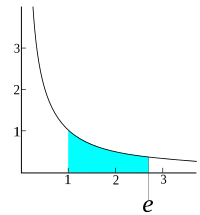
Photo from wikipedia
This work investigates olive pomace from olive mill factories as an adsorbent for the removal of total phenols from olive mill effluent (OME). This pathway of valorization of olive pomace… Click to show full abstract
This work investigates olive pomace from olive mill factories as an adsorbent for the removal of total phenols from olive mill effluent (OME). This pathway of valorization of olive pomace reduces the environmental impact of OME while providing a sustainable and cost-effective wastewater treatment approach for the olive oil industry. Olive pomace was pretreated with water washing, drying (60 °C) and sieving (<2 mm) to obtain the raw olive pomace (OPR) adsorbent material. Olive pomace biochar (OPB) was obtained via carbonization of OPR at 450 °C in a muffle furnace. The adsorbent materials OPR and OPB were characterized using several basic analyzes (Scanning Electron Microscopy–Energy-Dispersive X-ray SEM/EDX, X-ray Diffraction XRD, thermal analysis DTA and TGA, Fourier transform infrared FTIR and Brunauer, Emmett and Teller surface BET). The materials were subsequently tested in a series of experimental tests to optimize the sorption of polyphenols from OME, investigating the effects of pH and adsorbent dose. Adsorption kinetics showed good correlation with a pseudo-second-order kinetic model as well as Langmuir isotherms. Maximum adsorption capacities amounted to 21.27 mg·g−1 for OPR and 66.67 mg·g−1 for OPB, respectively. Thermodynamic simulations indicated spontaneous and exothermic reaction. The rates of total phenol removal were within the range of 10–90% following 24 h batch adsorption in OME diluted at 100 mg/L total phenols, with the highest removal rates observed at pH = 10. Furthermore, solvent regeneration with 70% ethanol solution yielded partial regeneration of OPR at 14% and of OPB at 45% following the adsorption, implying a significant rate of recovery of phenols in the solvent. The results of this study suggest that adsorbents derived from olive pomace may be used as economical materials for the treatment and potential capture of total phenols from OME, also suggesting potential further applications for pollutants in industrial wastewaters, which can have significant implications in the field of environmental technologies.
Journal Title: Molecules
Year Published: 2023
Link to full text (if available)
Share on Social Media: Sign Up to like & get
recommendations!